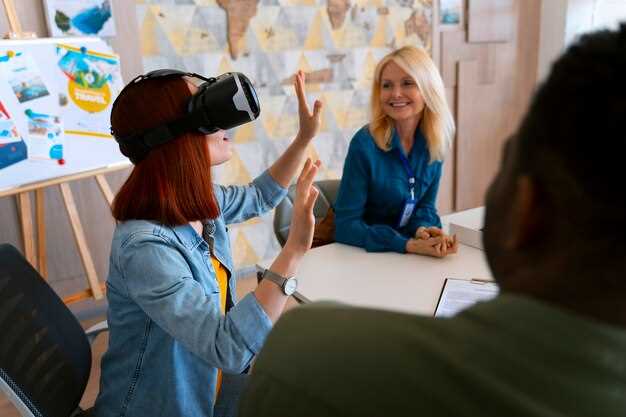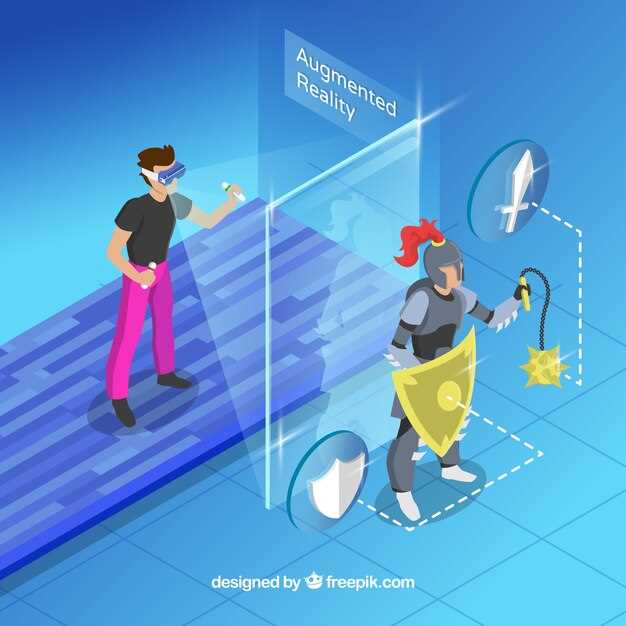
Modern advancements have revolutionized the way businesses connect with their clientele. Innovative technologies create opportunities for more immersive interactions. Increasingly intuitive interfaces are capturing attention and reshaping expectations. Users desire solutions that feel personalized, immediate, and efficient.
In a world where time is of the essence, finding effective ways to bridge the gap between questions and answers becomes critical. This transformative approach not only elevates satisfaction levels but also fosters brand loyalty.
Evolving methods enable companies to deliver assistance that feels remarkably lifelike. Instead of traditional support channels, engaging visuals can now guide users through challenges. Customers can enjoy a seamless journey that combines information with interaction.
As competition hots up, staying ahead requires adaptability to emerging technologies. Businesses embracing this shift are likely to reap substantial benefits. Such integration can dramatically change perceptions, leading to greater customer engagement.
The Impact of Augmented Reality on Customer Service

Combining digital elements with the physical world opens innovative avenues for interaction. Businesses are discovering new ways to engage with clients through immersive technology. This shift is not merely a trend; it’s reshaping how organizations communicate with their audience. Instant answers and rich visuals create compelling narratives.
Enhanced engagement fosters deeper connections. Interactive demonstrations provide insights that traditional methods cannot match. Imagine customers visualizing products before purchase. This level of understanding cultivates trust and satisfaction. By integrating these technologies into daily operations, companies are optimizing interactions like never before.
In a landscape where competition is fierce, standing out is crucial. Integrating such modern tools facilitates seamless communication. It allows for effective problem resolution and tailored experiences, thus making it easier for clients to find what they need. Not only does it streamline processes, but it also empowers teams to deliver exceptional value.
Accordingly, organizations leveraging this technology are witnessing substantial returns. Enhanced visualization can significantly reduce ambiguity surrounding product features. Whether through virtual try-ons in fashion or 3D models in real estate, the possibilities are boundless. These experiences provide clarity, ensuring that clients feel informed and confident in their decisions.
Furthermore, feedback loops become more effective with engaging formats. As customers navigate these rich environments, their input helps refine offerings. This collaborative approach not only boosts satisfaction but also drives innovation within the enterprise. Overall, embracing this technological evolution is essential for sustained growth.
Enhancing User Experience with AR

Innovation is reshaping interactions between brands and individuals. Immersive technologies create opportunities for deeper connections. Users crave more than just transactions; they desire engaging experiences. Providing stimulating environments can captivate attention and encourage loyalty.
Imagine walking through a store, products coming to life right before your eyes, guiding you toward the perfect choice. This approach not only informs but also entertains. It turns mundane activities into enjoyable adventures. When customers interact with digital overlays, they feel empowered to make informed decisions.
Engagement is crucial in cultivating lasting relationships. By integrating interactive elements into everyday tasks, businesses increase satisfaction. The familiarity of surroundings combined with digital enhancements fosters a unique atmosphere. This synergy creates an environment that resonates with modern expectations.
Innovation like this shifts perceptions of how individuals approach their purchases. Instead of feeling pushed toward a sale, they feel accompanied on a journey. This transition from obligation to exploration is what sets successful enterprises apart. By delivering enjoyable moments, brands are not just offering products but are crafting memorable experiences.
Immersive Interaction for Consumers
Modern technological advancements have opened new avenues for interaction. Engaging with products or services has transformed dramatically. Customers now seek deeper, more meaningful connections. These interactions are no longer limited to traditional methods. Instead, they invite participation through immersive mediums.
By leveraging innovative tools, businesses captivate their audiences like never before. As individuals explore offerings, they find themselves in a dynamic environment. This engagement fosters a sense of presence that is hard to replicate. Captivating visuals and responsive interfaces contribute to a more satisfying journey.
Immersive experiences not only delight but also educate users. They allow potential buyers to visualize and comprehend products better. Complicated features become simpler, and decision-making is expedited. When customers can see how an item fits into their lives, their intent to purchase increases significantly.
Consumers enjoy exploring environments where they can manipulate elements at will. This interactive format empowers them to make informed choices. The potential for customization adds an exciting layer. Shoppers appreciate the ability to tailor experiences to their preferences. Such rich interactions can lead to increased loyalty and trust.
Enhanced engagement strategies result in memorable impressions. Users tend to remember brands that offer distinctive, hands-on experiences. With this level of interaction, companies can differentiate themselves in a crowded market. Providing captivating solutions pushes the standard for what customers expect. Adopting these methods highlights a commitment to innovation and satisfaction.
Ultimately, the fusion of immersive technology with everyday transactions paves the way for future exchanges. It’s not merely about selling; it’s about creating unforgettable moments. As consumers crave more from their engagements, businesses must rise to meet these demands. The potential for revolutionary connections is vast and largely untapped.
Personalization Through Augmented Experiences
Customization in digital interactions has transformed how brands connect with individuals. Unique and tailored engagements have become not just beneficial but essential. Engaging customers through immersive solutions creates a bond that traditional methods often lack. This evolution in approach is crucial for businesses aiming to stand out.
- Personal touches can significantly improve satisfaction.
- Engagements feel more relevant and enjoyable.
- Users appreciate when brands understand their needs.
- Technologies can deliver context-based suggestions.
When tailoring interactions effectively, brands leverage insights about preferences, behaviors, and interests to provide relevant content that resonates deeply, fostering an emotional connection with the audience as they navigate through personalized journeys designed to meet their specific desires and expectations.
- Collect data on user behavior.
- Analyze patterns to determine preferences.
- Create personalized recommendations based on insights.
- Integrate interactive elements for a more engaging experience.
- Continuously refine approaches for improved outcomes.
This attention to detail symbolizes a shift towards a more connected and individualized relationship between brands and their clientele. By folding customization into these innovative experiences, businesses can cultivate loyalty and trust. Moreover, satisfied customers are likely to share their positive encounters, amplifying brand reach organically.
As expectations continue to rise, those who embrace this transformative engagement method will likely lead the way in defining future interactions. The intersection of technology and personalization not only meets contemporary demands but also sets a foundation for meaningful exchanges that evolve with user needs over time.
Streamlined Navigation in Retail Spaces
Modern retail environments often present challenges when it comes to locating products or services. Shoppers can feel overwhelmed by numerous aisles and displays. A more intuitive layout improves flow and minimizes frustration. Simplified pathways lead to better satisfaction and loyalty. Shoppers appreciate a seamless journey through stores.
Technology plays a significant role in guiding individuals within these spaces. Digital maps and interactive kiosks help direct customers efficiently. With mapping features, they can quickly locate specific items or sections. Augmenting this with sensory cues, such as sounds or visuals, creates a more immersive atmosphere. When navigation becomes effortless, shopping transitions from a chore into an enjoyable experience.
Augmented elements can transform how signage is utilized throughout retail environments. With clear, engaging displays, customers gain insights without feeling lost. They interact directly with their surroundings, allowing for a dynamic experience. Such innovative design fosters engagement, encouraging exploration of different areas within a store. Ultimately, this leads to increased interaction with products and higher potential for purchases.
Improvement in navigational ease not only benefits shoppers but also retailers. Operating costs can decrease due to reduced staff intervention needed for assistance. An intuitive environment fosters a sense of independence among consumers. Shoppers may also spend more time exploring, drawn in by a streamlined layout. Such engagement plays a crucial role in boosting sales and customer retention.
AR in Product Demonstrations
Innovative technology transforms how products are showcased. Dynamic interactions captivate audiences, making presentations unforgettable. Users expect more than static images; they seek engaging, immersive experiences that resonate deeply. This necessity drives brands to adopt cutting-edge approaches to demonstrate their offerings effectively.
With this technology, potential buyers can visualize items in their environments. They experience products firsthand before committing to a purchase. This immersion arises from realistic simulations that provide a sense of ownership. Customers can rotate, zoom in, and examine every detail, ensuring informed decisions.
| Advantages of AR in Demonstrations | Traditional Methods |
|---|---|
| Interactive simulations | Static displays |
| Personalized experiences | Generic presentations |
| Enhanced understanding | Limited engagement |
| Increased retention | Lower memorability |
Such vivid encounters bridge gaps between brands and consumers. They forge emotional connections that traditional methods simply fail to achieve. Engaging audiences through modern technology fosters loyalty and trust, creating lasting impressions that drive repeat business. As companies increasingly recognize these benefits, many are reimagining their marketing strategies.
Transforming Support with Augmented Reality

Support processes are evolving rapidly, fueled by innovative technologies. Integration of immersive solutions creates unique opportunities for interaction. New tools allow businesses to provide assistance in an engaging manner. Key advantages emerge in problem resolution and overall efficiency.
This technology empowers users to visualize complex information effortlessly, guiding them through challenges step by step. By leveraging this immersive experience, organizations enhance their troubleshooting capabilities, assisting customers in a hands-on way.
Imagine being able to receive guidance through a virtual overlay while using a product. The immediacy of this approach reduces frustration and fosters satisfaction. Customers can finally feel understood, as assistance becomes more tailored to their needs. This metamorphosis not only boosts confidence but also nurtures lasting relationships.
As organizations embrace these groundbreaking advancements, a transformational wave reshapes traditional engagement methods. Enhanced interaction facilitates higher levels of comprehension, allowing individuals to grasp intricate concepts easily. The future beckons with exciting possibilities, where every issue met with agile solutions promotes a sense of supportiveness.
Efficient Remote Troubleshooting Techniques
Solving technical issues remotely provides numerous advantages for both businesses and clients. It enhances efficiency and reduces downtime significantly. By utilizing modern tools, support teams can assist users in real time. This creates a seamless communication channel, allowing for quick resolutions.
One effective method is employing visual aids. Through video calls, support representatives can guide users step-by-step. This approach humanizes interactions, making clients feel valued and understood. Instead of relying solely on verbal instructions, visuals become crucial.
Additionally, leveraging screen sharing capabilities allows experts to see issues firsthand. They can diagnose problems more accurately without unnecessary delays. Detailed annotations can highlight specific areas of concern, enabling clear communication. This technique fosters engagement and empowers users to learn.
Another strategy involves creating an extensive knowledge base filled with resources. Frequently asked questions, troubleshooting guides, and video tutorials can preemptively address common issues. When a customer accesses this information easily, they often resolve challenges without needing direct assistance. This not only saves time but also improves satisfaction levels.
Real-time monitoring tools further streamline the troubleshooting process. Technicians can identify potential problems before the user even notices them. Proactive measures lead to quicker resolutions and help maintain system integrity. As a result, both parties experience a smoother collaboration.
Ultimately, combining these techniques creates a robust framework for effective remote troubleshooting. Adopting a mix of visual guidance, collaboration tools, and knowledge resources can significantly enhance interactions. As technology continues to evolve, staying ahead of challenges will be vital for sustained success. Engaging with customers in innovative ways can cultivate lasting relationships built on trust and efficiency.
Real-Time Guidance for Customers
Providing immediate assistance transforms interactions with patrons. Such support can arise precisely at moments of need, bridging gaps in understanding. Quick solutions or detailed advice make all the difference. When consumers face challenges, timely help enhances the journey significantly.
Innovative tools empower clients to navigate complexities. Real-time guidance fosters confidence. Whether in stores or focusing on online platforms, it offers tailored solutions. Customers appreciate guidance tailored to specific situations.
- Instant feedback allows users to address problems swiftly.
- Interactive tutorials illustrate processes clearly and effectively.
- Visual prompts engage users, making navigation seamless and enjoyable.
- Support can be accessed via smartphones, ensuring assistance is always close.
Such an approach not only alleviates frustrations but also builds loyalty. When individuals feel supported, they are more likely to return for additional interactions. Enhancing satisfaction through real-time assistance cultivates positive relationships between brands and patrons.
- Understanding users’ needs is crucial.
- Employing immersive interfaces allows for intuitive interactions.
- Continuous improvement based on feedback can elevate services.
- Adapting tools to fit diverse requirements ensures widespread usability.
This seamless interaction approach not only mitigates confusion but also solidifies trust, ultimately leading to long-term engagement and satisfaction among buyers.
Virtual Assistance in Technical Support
Contemporary support systems benefit significantly from intelligent virtual helpers. These digital assistants streamline processes and alleviate user frustrations. Technology enables quicker resolutions for common problems. They provide guidance and solutions at any time.
Imagine having immediate access to essential information without waiting. Users can receive step-by-step instructions and troubleshooting tips in real-time. This not only saves time but also boosts confidence in resolving issues independently. Moreover, when faced with complex challenges, virtual assistants can direct users to human agents seamlessly. With artificial intelligence at the forefront, these assistants learn from interactions and evolve, improving their responses with each query.
Providing interactive features, such as voice recognition and visual aids, enhances engagement further. Users can describe their problems naturally, leading to more effective solutions. This approach reduces the dreaded frustration that often accompanies technical difficulties. Organizations leverage this technology to maintain a competitive edge and elevate satisfaction levels. In turn, customers enjoy a more streamlined, efficient, and personalized troubleshooting experience that caters to their needs. Virtual assistance represents a remarkable evolution in operational dynamics for modern support environments.
Video:
Augmented Reality (AR) and Virtual Reality (VR) Explained |
Augmented Reality (AR) and Virtual Reality (VR) Explained | by Cdr Sh Pallikkal 193,348 views 4 years ago 5 minutes, 58 seconds
Q&A:
How does augmented reality (AR) enhance customer service experiences?
Augmented reality enhances customer service experiences by providing interactive and immersive solutions that allow customers to visualize products in their real-world environments. For instance, AR can enable customers to see how furniture would look in their homes before making a purchase or help them navigate complex products with step-by-step instructions overlaid onto their view. This interactivity not only reduces uncertainty and increases satisfaction but also empowers customers to make informed decisions, ultimately leading to improved engagement and loyalty.
What are some specific examples of companies using AR in their customer service strategies?
Several companies have integrated augmented reality into their customer service strategies. For instance, IKEA has launched the “IKEA Place” app, which allows users to virtually place 3D models of furniture in their living spaces, helping them gauge size and fit. Similarly, Sephora utilizes AR to let customers try on makeup virtually through their app, enhancing the shopping experience by allowing users to experiment with products without physical trials. These examples highlight how companies can leverage AR to create more personalized and engaging customer experiences.
What are the main challenges businesses face when implementing AR in customer service?
While augmented reality offers many benefits, businesses face several challenges in its implementation. Firstly, the development and maintenance of AR technology can be costly and require significant investment in hardware and software. Secondly, businesses must ensure that AR applications are user-friendly and accessible to all customers, which requires thorough testing and iteration. Additionally, companies may encounter resistance from employees who are not familiar with AR technology or are apprehensive about its impact on their roles. Lastly, ensuring data privacy and security when using AR tools is paramount, necessitating careful management of customer information.
How does AR influence customer satisfaction and loyalty?
Augmented reality has a profound influence on customer satisfaction and loyalty by enhancing the overall shopping experience. When customers interact with AR features, they often feel more confident in their purchasing decisions, leading to higher satisfaction levels. The immersive experience provided by AR can create emotional connections with the brand, making customers more likely to return. Furthermore, by offering innovative and convenient tools that make the shopping process easier, businesses can foster a sense of brand loyalty, encouraging repeat visits and ongoing engagement. In essence, AR not only meets customer expectations but can exceed them, nurturing lasting relationships between consumers and brands.
What future trends can we expect in the use of AR for customer service?
The future of augmented reality in customer service is promising and likely to evolve significantly. We can expect to see more widespread adoption of AR across various industries, driven by advances in technology and user demand for enhanced experiences. Trends may include personalized AR interactions that adapt to individual customer preferences and behaviors, as well as the integration of artificial intelligence to improve the accuracy and effectiveness of AR tools. Moreover, as AR becomes more accessible through smartphones and wearable devices, businesses may utilize it for real-time support, allowing customers to receive assistance via AR overlays during product use. Overall, AR is set to play an increasingly central role in how businesses engage with customers, paving the way for innovative service solutions.
How does augmented reality (AR) improve customer service and user experience?
Augmented reality (AR) enhances customer service by providing interactive and immersive experiences that can facilitate better understanding of products and services. For instance, AR applications enable customers to visualize how a product would look in their environment before making a purchase. This can be particularly beneficial in sectors like retail, where customers can use their smartphones or AR glasses to virtually try on clothing or visualize furniture in their homes. Moreover, AR can assist support teams by overlaying relevant information during troubleshooting or guiding users through complex processes, thereby increasing efficiency and satisfaction.